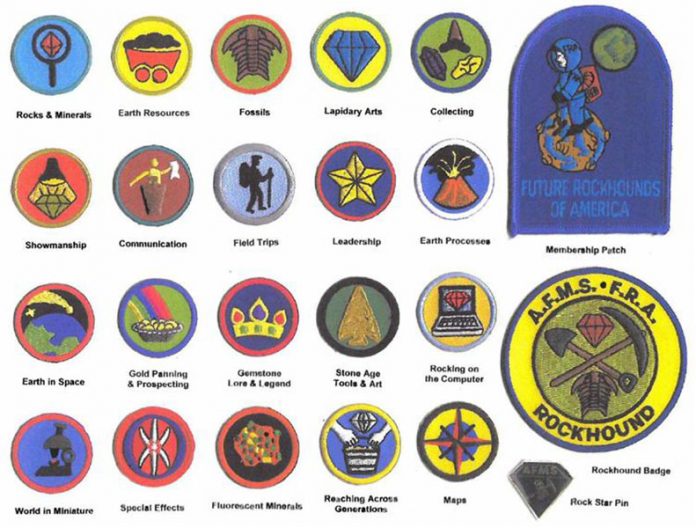
by Jim Brace-Thompson, AFMS
Future Rockhounds of America is a program that rewards kids on an ongoing basis as a means of encouraging and cultivating their interest in the earth sciences and lapidary arts. Through this, each federation clubs and societies can uphold our chartered goals as nonprofit, educational organizations by actively seeking to foster and develop science literacy and arts education amongst our youngest members.
My guiding philosophy has three underpinnings. They come from both my own values as a person invested in the positive development of young people and from a wealth of academic research indicating that if one wants to design and deliver programs that effectively promote positive development among young people, three steps are crucial to enact.
First, we must provide young people with opportunities to learn important skills.
Second, we must provide these opportunities in the context of positive and continuing youth-adult relationships.
Third, once youth have these skills, we must give them the opportunity to participate in, as leaders of, the programs we present to them.
So, first step: We learn by doing. Book knowledge is great, but reading 1,001 books won’t craft a cab. You’ve got to roll up your sleeves, slice a rock, and watch your thumbnails disappear as you shape and grind that first special gem!
Second point: We are motivated by goals that are attainable and that offer tangible rewards and recognition, especially if we’re given a clear roadmap and consistent support and guidance toward reaching those goals. With kids, this means encouraging supportive adult-youth relationships through adult mentors who pledge a relatively long-term commitment. The best program would be one in which children, youth and adults work, learn and grow together. The importance of fostering—and maintaining—supportive relationships cannot be stressed enough. A basic expectation of clubs enrolling kids in FRA should be genuine, active and sustained commitment on the part of the individual youth leaders and the entire club in order to foster strong relationships between adults and young people and between young people and their peers.
Third step: Kids are motivated the most when they participate the most, both in choosing the activities they’d like to engage in and in helping to shape those activities. In this regard, I’m especially proud to note that one of our badge units, Reaching Across Generations, was proposed and developed by a junior member, Erica Nathan, who—as of this writing—is a college student pursuing her dreams. Another junior member, Jem Burch, suggested the “Elements” activity now included within our Rocks & Minerals badge for this Fourth Edition of the manual.
It’s with these thoughts in mind that I’ve developed an AFMS/FRA series of guided activities modeled after the Boy and Girl Scouts Merit Badge™ systems. There are clusters of activities children and youth can do either on their own or at club meetings or workshops, and earn badges as a result. For instance, one is a Rocks & Minerals cluster that involves building a mineral ID kit with readily available tools, then demonstrating how to use it to identify several common minerals. Another cluster revolves around Lapidary Arts and requires planning and crafting a project such as a cab, wire-wrapped necklace, or soapstone sculpture, while learning the basics of shop tools and safety.
The FRA program lays the groundwork for 20 badges:
- Rocks & Minerals
- Earth in Space
- Earth Resources
- Gold Panning & Prospecting
- Fossils
- Gemstone Lore & Legend
- Lapidary Arts
- Stone Age Tools & Art
- Collecting
- Rocking on the Computer
- Showmanship
- The World in Miniature
- Communication
- Special Effects
- Field Trips
- Fluorescent Minerals
- Leadership
- Reaching Across Generations
- Earth Processes
- Maps
Local youth leaders are encouraged to adjust the level of each activity to match the age range of the kids involved.












